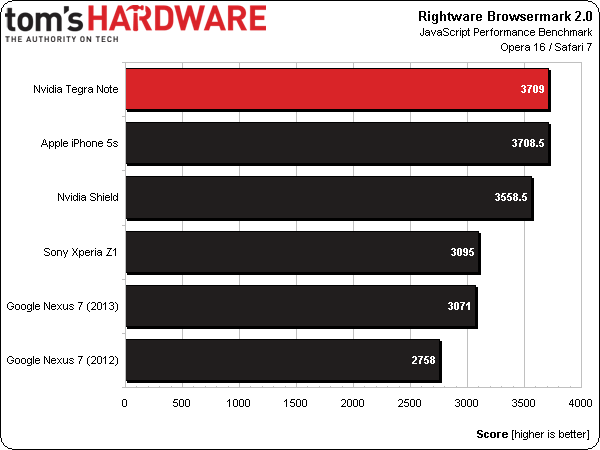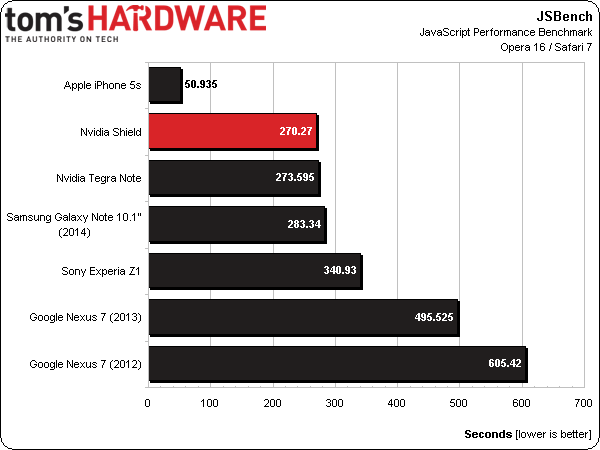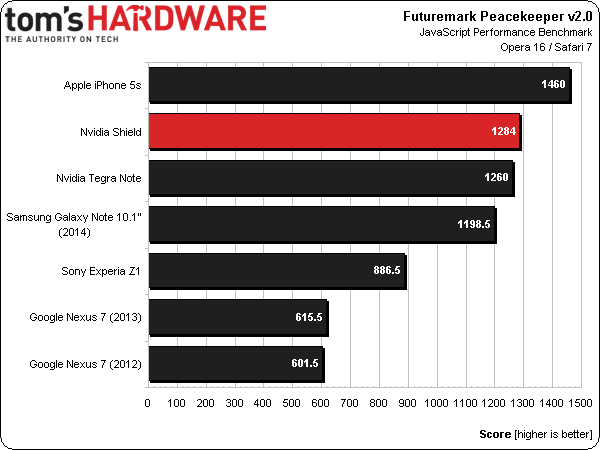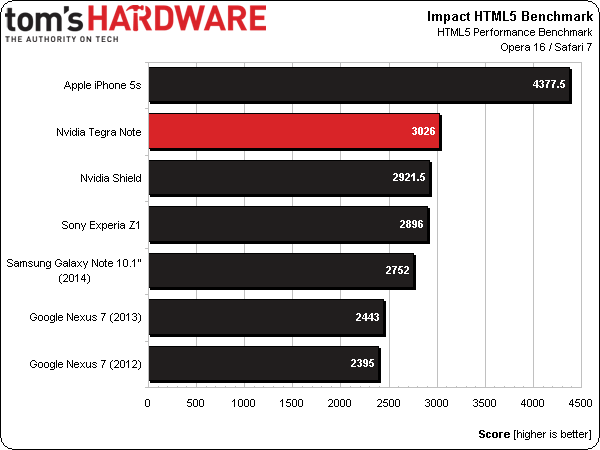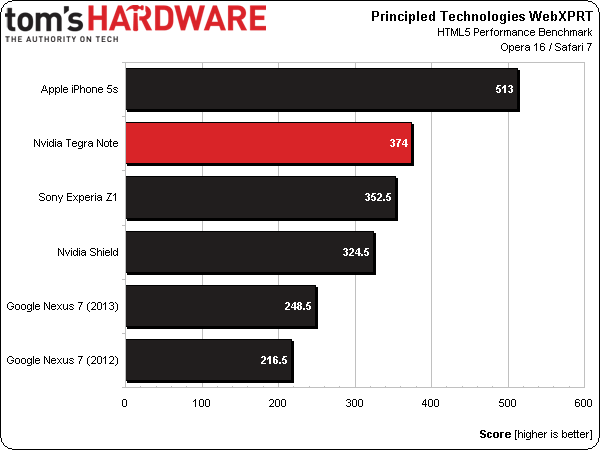EVGA Tegra Note 7 Review: Nvidia's Tegra 4 For $200
Nvidia is partnering with EVGA on the company's second Tegra 4-based device. Its Tegra Note 7 sells for $200, sports unique stylus technology, and ships with a bloatware-free build of Android. Can it set a new standard for affordable seven-inch tablets?
Results: Web Browsing Benchmarks
The tests on the this page are JavaScript- and HTML5-heavy selections from our Web Browser Grand Prix series. Such tests are extra meaningful on mobile platforms, where much of the in-app content is served via the platform's browser on the back-end. They should not only offer a view of the Web browsing performance of each device, but since these tasks are traditionally so CPU-dependent, browser benchmarks (especially JavaScript-heavy tests) are a great way to measure SoC performance on devices using the same browser and platform.
All web tests are conducted using the optimal Web browser for each platform. Due to platform restrictions, Safari is the one and only choice for iOS-based devices, while Internet Explorer is the only game in town on the Windows RT platform. While Chrome is the obvious choice for Android, in order to keep our browser versions even across devices for the foreseeable future, we're employing Opera 16, which is also based on Chromium.
JavaScript
First up, we have Rightware’s BrowserMark, a synthetic browsing benchmark that tests several aspects of performance including: load time, CSS, DOM, HTML5 Canvas, JavaScript, and WebGL.
Nvidia’s Tegra Note manages to just barely take the lead in this test over Apple’s flagship iPhone 5s. Oddly enough, the Shield, which utilizes a higher-clocked version of the Tegra 4 SoC, trails behind in third place. Both of Nvidia’s Tegra 4 devices and the A7-powered Apple handset come out significantly ahead of the Sony Xperia Z1 carrying Qualcomm’s latest Snapdragon 800.
In another round of good news for Nvidia, both comparably-priced Nexus 7 models are handily beaten, showing the Nvidia Note as a value proposition against the slightly more expensive Nexus 7 (2013) with Qualcomm’s mid-range Snapdragon S4. The Note’s Tegra 4 beats last year’s Tegra 3 in the Nexus 7 (2012) by nearly 1000 points, or almost 30 percent.
Next up, we have JSBench, the newest JS performance test on the block, and the spiritual successor to WebKit’s ubiquitous SunSpider test that just won’t seem to go away. Unlike most off-the-shelf Web browser benchmarks, JSBench could almost be considered real-world. This test utilizes snippets of JavaScript that actually appear on several of today's most-visited Web sites.
Here the iPhone 5s and its 64-bit A7 SoC dominates the field, although Nvidia’s Tegra 4 devices take second position. Able to run up to 100 MHz faster than the Note, the Tegra 4 inside of Shield takes second place. Close behind is the Samsung Galaxy Note 10.1” 2014 Edition with the company’s Exynos 5. Qualcomm-based devices are next in line with Snapdragon 800 in the Sony Xperia N1 beating the current Google Nexus 7 and its Snapdragon S4 by a significant margin. This benchmark shows the Tegra Note more than doubling the performance of last year’s Tegra 3-based Nexus 7.
Get Tom's Hardware's best news and in-depth reviews, straight to your inbox.
Peacekeeper is a synthetic Javascript performance benchmark from Futuremark, makers of 3DMark and PCMark.
The placing order here remains the same as in JSBench, though the margins between the first-place iPhone 5s and the runner-up Tegra 4 devices is far more forgiving. The Note and Shield once again displays twice the performance as the Tegra 3-based Nexus 7.
HTML5
Now we're moving away from JavaScript and into HTML5. First up is the Impact HTML5 Benchmark. Essentially a timedemo of the Impact HTML5 game engine in action, the relative performance here should be pretty indicative of other HTML5-based platformers.
Impact places the devices in much the same order as our last two JS tests, with the A7-based iPhone put ahead, followed by the two Nvidia products. This time the Tegra Note bests the higher-clocked Shield, though by just 100 points.
Finally, we have Principled Technologies' WebXPRT, an HTML5-based Web app benchmark. This test simulates common productivity tasks that are traditionally handled by locally-installed applications, including: photo editing, financial charting, and offline note-taking.
This final test lines up with previous three benchmark results, with one excpetion. Here, the Snapdragon 800-based Xperia Z1 manages to slip in between the two Tegra 4 devices, and the Shield is again placing behind the Note. This time, the Nexus 7 (2012) and its Tegra 3 are about 40 percent behind the Tegra 4-based devices.
Overall, the Web tests are favorable for Nvidia. While nothing can touch Apple’s A7, even the new iPad mini is twice the cost of the Tegra Note. Besides, versus the Android-based competition, the Tegra 4 is sitting pretty.
Current page: Results: Web Browsing Benchmarks
Prev Page Results: GPU Benchmarks Next Page Results: Display Measurements